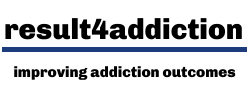Comorbidity
dealing with anxiety and addiction
What is it all about?
Feeling anxious is a common experience ranging from mild and short-lived symptoms to severe and omnipresent symptoms. The co-occurence of anxiety and substance use is difficult to treat because the one tends to feed off the other. It is important to try and establish if the anxiety came first and the substance use is by way of self-medicating or if the substance use came first and the anxiety is a consequence of a repeated withdrawal syndrome or toxic effect of addictive drugs. Here are the varied manifestations of anxiety…
Normal anxiety
At optimal levels, anxiety and worry may help to direct problem-solving efforts, focus attention adaptively, and increase alertness. Normal anxiety and worry are usually sufficiently self-regulated that they do not interfere with wellbeing or cause marked distress. What is known as the flight or fight response may occur in situations we fear or find stressful. A job interview, walking through a crowded shop, or, running late for an important deadline, for example. When a threat is anticipated the body produces adrenaline, in preparation for ‘flight or to fight’, and the bodily response is faster and deeper breathing, an increased heart rate, ‘butterflies’ in the stomach, and muscles tensing or maybe trembling.
Phobias and specific fears
Specific phobias encompass fears of a broad range of situations. The most common are for particular animals, heights, enclosed spaces, sight of blood or injury, flying, driving, storms, darkness, and medical/dental procedures. Phobias are marked and excessive fears or anxiety that consistently occur upon exposure or anticipation of exposure to one or more specific objects or situations, and are out of proportion to the actual danger posed. Physical symptoms such as fainting and panic may occur.
Agoraphobia is a marked and excessive fear or anxiety that occurs in, or in anticipation of, situations that may be difficult to get out of, such as using public transportation, being in crowds, being outside the home alone, in shops, theatres, or standing in line. The individual is consistently fearful or anxious about these situations due to a fear of specific negative outcomes such as panic attacks, or embarrassing happenings, such as falling or incontinence.
Social phobia is a marked and excessive fear or anxiety that occurs consistently in one or more social situations such as having a conversation, doing something while feeling observed, such as eating or drinking in the presence of others, or performing in front of others, for example giving a speech. The individual fears that he or she will be negatively judged by others.
Hypochondriasis is a persistent preoccupation or fear about the possibility of having a serious, progressive or life-threatening illness. It is manifest by excessive health-related behaviours, such as repeatedly checking the body for evidence of illness, spending inordinate amounts of time searching for information about the feared illness, repeatedly seeking reassurance.
Separation anxiety is a marked and excessive fear or anxiety about separation from those individuals to whom the individual has a deep emotional bond. In children and adolescents, this is most commonly parents, caregivers, and other family members. In adults, separation anxiety most often involves a spouse, romantic partner, or children.
Generalised anxiety
A marked ‘free-floating anxiety’ characterised by general apprehensiveness that is not restricted to any particular circumstance or excessive worry about untoward events in everyday life, which are commonly related to work, finances, health, family. There is a sense of nervousness, restlessness, or being ‘on edge’ and irritability. There are physical symptoms such as nausea or indigestion, palpitations, sweating, trembling, shaking, dry mouth and difficulty falling or staying asleep, or unsatisfying sleep.
Panic attacks
Recurrent, discrete episodes of intense fear or apprehension characterised by the rapid onset of symptoms including:
palpitations or increased heart rate
sweating
trembling
shortness of breath
feelings of choking
chest pain
nausea or abdominal upset
feelings of dizziness or light-headedness
chills or hot flushes
tingling or lack of sensation in extremities
depersonalisation or derealisation
fear of losing control or going mad
fear of imminent death
At least some of the panic attacks are unexpected, that is they are not restricted to particular stimuli or situations but rather seem to arise ‘out of the blue’. Panics are often associated with a persistent worry about recurrence and how to avoid it.
Substance induced anxiety
Substance induced anxiety is characterised by apprehension or worry, fear, physiological symptoms of excessive autonomic arousal, and panic attacks that develop during or soon after intoxication with or withdrawal from alcohol or other drugs. The intensity or duration of the anxiety symptoms is substantially in excess of anxiety symptoms normally associated with intoxication or withdrawal.
Why is comorbidity common?
Substance use and anxiety commonly co-occur. There are three explanatory models: the shared vulnerability factors model, the self- medication model, and the substance-induced model. For substances with sedative properties (alcohol, benzodiazepines, cannabis, opioids), evidence for a self-medication model and for a substance induced effect exists. For substances with psycho-stimulant properties (tobacco, cocaine, and amphetamines), the literature favours the substance induced hypothesis to explain the association with anxiety disorders.
Use the General Anxiety Disorder GAD7 as a measure of general anxiety
This is what to do about it…
Family, friends and colleagues at work are more likely than helping agencies to have regular contact with people who experience anxiety and may need to handle someone having a panic attack. So. it is a good idea for everybody to be familiar with what can be done to help.
A supportive psychosocial intervention such as Social Behaviour and Network Therapy will be effective for most people attending addiction services with mild to moderate anxiety. As a part of this intervention, practitioners working with people who have a comorbidity will find it useful to master a relaxation technique. Here is an example of good practice…
10 Minute Guided Mindfulness Meditation - Relaxation
❝I've listened to this meditation well over a dozen times now and I find it to be one of the best to listen and meditate to before bedtime or any time.❞
There are more videos on Julie’s YouTube Channel
Dr Julie Smith is a Clinical Psychologist
There is very little evidence from controlled trials on the best way to help people with comorbidity and in particular anxiety and substance use. One approach is to determine a person’s readiness to change for anxiety and substance use and then treat each problem with the standard treatments. The difficulty is that the two problems become so intertwined and fuel each other and so the ideal way forward is to secure a period of abstinence which will give time to treat the anxiety and simultaneously take stock of the addiction problem. Psychological treatments are the most effective but medication can help reduce very high levels of anxiety…
❶ Generalised anxiety :: For most people making lifestyle changes, meaning taking regular exercise, a balanced diet and avoidance of stimulant drugs, including caffeine, will be effective. There are plenty of self-help books and support groups to facilitate a healthy lifestyle.
❷ Phobias and specific anxiety :: For simple phobias some form of exposure and desensitisation to the object or situation that causes the anxiety is the standard treatment. For more complex phobias, agoraphobia for example, then deeper psychotherapy may be needed. These interventions are best delivered by an experienced and suitably qualified practitioner such as a clinical psychologist.
❸ Alcohol and drug induced anxiety :: Logically, abstinence from psychoactive drugs is the best intervention here. The evidence supports the effectiveness of long term abstinence. Withdrawal syndrome anxiety will respond to sedative medications.
❹ Panic attacks :: Panic attacks can happen anywhere. They are not life threatening or hazardous, just very scary. This video is an excellent guide for anyone who experiences panics and equally practitioners helping with a panic attack…
Coping with a panic attack
❝My teeth would chatter uncontrollably and my whole body would tremble, I'd hyperventilate and cry with panic as the feeling that I was going to fall unconscious was so convincing.❞
❝I turned my mental health crisis into a mental health triumph.❞
MIND is a UK mental health charity




